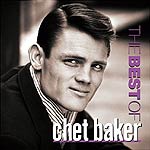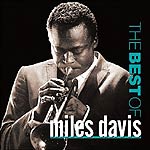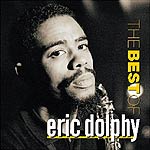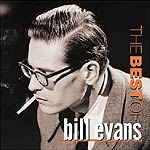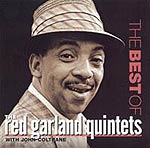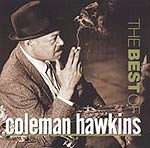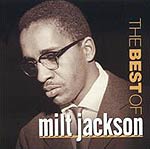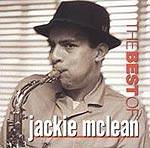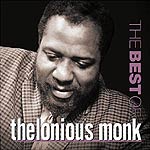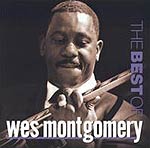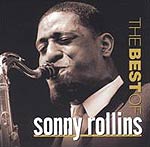
A grand introduction
|
This review first appeared in the Autumn 2004 issue of Turbula.
Why do the jazz labels insist on issuing "Best of" sets when so few jazz musicians spent their careers with one label? Because with the vast majority of jazz artists having bounced from one label to another, the odds of any one label having rights to all of any one musician's best material is slight.
And what is a musician's "best" material, anyway? It's not like the pop or rock world, where you take all the charting singles and issue that as a "greatest hits" package. Part of the fun of jazz is the ongoing debate and discussion over which recordings represent any given artist's height of artistic achievement – a debate that is so utterly subjective that it can never be won.
Take Miles Davis, for instance. A true "best of" Miles set would likely need four discs, maybe more considering that as early as the 1950s he was creating concept albums meant to stand as a complete work, not a selection of individual songs. Regardless, you have his mid-1940s work as a sideman for Charlie Parker, his own pioneering late-'40s sets as a leader (now available as "Birth of the Cool"), his late-'50s recordings with his stellar quintet that featured John Coltrane (which issued "Milestones" and "Kind of Blue"), his Gil Evans collaborations of the same period ("Porgy and Bess" and "Sketches of Spain"), his mid-'60s quintet with Herbie Hancock, Ron Carter, Tony Williams and Wayne Shorter ("In a Silent Way," "Bitches Brew"), and even his 1986 electronic album "Tutu" and his final studio effort, the rap-jazz fusion of "doo-bop." And from all that you're going to have a "Best of"?
In fact, "The Best of Miles Davis" is drawn from his 1951-56 period when he recorded for Prestige Records – which is now owned by Fantasy Records, which is issuing a new series of "Best of" albums.
While this is some of Miles' most interesting work, it is, at best, only a very slender slice of his best work. Four tracks include his quintet that featured Coltrane on tenor sax, Red Garland on piano, Philly Joe Jones on drums and Paul Chambers on bass. Others feature various small units he worked with during those years, including a tightly coiled reading of Dizzy Gillespie's "A Night in Tunisia" in a quartet setting. But none of these are what most jazz historians would consider his most groundbreaking.
The same would have to hold true for Chet Baker, Miles' white trumpet-playing contemporary in the 1950s "cool" style. Baker burned out from heroin fairly quickly and never achieved anything near Miles' body of work, but at one time Baker's muted trumpet playing rivaled Miles' in both popularity and critical acclaim.
Yet Baker's best, most influential work was done for Pacific Jazz. And so while the music here, mostly taken from the years (late 1950s) just after his legendary Pacific Jazz sessions as a leader, is very good, it isn't Baker's definitive recordings that set the jazz world on its ear.
Perhaps these albums in Fantasy's new "Best of" series could be better thought of as "An Introduction To." Because there is some fantastic music here, and each album is, at the very least, a representative sampling of each artist's better recordings. If not a "Best Of" in most cases, this series still represents a very good jumping off point for those interested in learning about some of jazz' most influential performers without dropping the coin for a box set.
With that mind-set, the Thelonious Monk collection can be much better appreciated. In truth, Monk's definitive versions of "'Round Midnight" and "Ruby, My Dear" had been recorded a few years earlier for Blue Note – and it is his Blue Note period that most jazz historians would select as his most definitive. But these recordings for Riverside from 1955-60 are still a fascinating snapshot of Monk at the peak of his creativity. His solo piano version of "'Round Midnight" is spare and haunting; his tracks with a septet that included Coltrane, Coleman Hawkins and Gigi Gryce on saxophone (along with Art Blakey on drums) are stellar. There's a lush version of "I Mean You" from a quintet featuring Thad Jones on cornet, and a stripped-down reading of "Straight, No Chaser" in a quartet with Gerry Mulligan on baritone sax.
As with Miles, the "Best of Thelonious Monk" contains little that is truly his best, but a lot that is awful good.
The selections for vibraphonist Milt Jackson's collection are taken from his mid-1950s Prestige recordings up through some early '60s sessions for Riverside. Given all Jackson did with the Modern Jazz Quartet, the recordings here are clearly not a comprehensive overview of his career, but there are some very fine tracks. Horace Silver's "Opus de Funk" – with Silver himself at piano – opens the album with some of Jackson's hardest bopping work. Other tracks feature him co-leading combos with Cannonball Adderley and Wes Montgomery, plus his own small group that was more of an all-star conglomeration, with Kenny Dorham on trumpet, Tommy Flanagan on piano, Ron Carter bass and Connie Kay drums.
But the most interesting cuts here are probably the five big band tracks. With Clark Terry and Doc Severinsen holding down trumpet chairs in one ensemble, and Terry, Thad Jones and Snooky Young in another, these were some powerhouse big bands, especially in the early 1960s when the ranks of big bands had been substantially thinned.
Tenor saxophonist Coleman Hawkins had an active career from the 1920s through his death in 1969, and was widely considered the very best of tenor saxophonists by at least two generations of jazz musicians. Remarkably, during his long career, he issued very few mediocre sets; nearly everything he recorded was outstanding. This compilation from the late 1950s and early 1960s finds him at perhaps the highpoint of his career. Grouped with younger bop cats like Kenny Burrell, Pepper Adams, Tommy Flanagan, and, in one instance, a tenor battle with Eddie "Lockjaw" Davis, these selections let Hawkins show off his full jazz vocabulary, from early big band to the hardest bop. By no means definitive, this is still a very nice collection.
Guitarist Wes Montgomery had two very distinct career high points – most music fans remember him for his 1960s popular instrumental recordings. Accessible, breezy and fun, they presaged George Benson's late 1970s forays into instrumental pop.
But for hardcore jazz buffs, Montgomery's apogee came in the years 1959 to 1963 when he recorded for Riverside Records. Thus, the Montgomery set is in a very real sense the "Best of" his jazz career, finding him in his seminal sessions with his brothers, Milt Jackson, George Shearing and with strings.
Guitarist Kenny Burrell is best known for his frequent collaborations with organist Jimmy Smith; however, his very first recordings as leader were on Prestige Records, and that period (1956-1963) is captured in this disc. Not yet fully developed as a musician, nevertheless Burrell's tone here is thickly gorgeous, his solos already liquid and imaginative. And a 1963 date with Brother Jack McDuff is a hint of the guitar-organ partnership he'd perfect with Smith later that decade.
Reed player Eric Dolphy died so young (at age 36, probably of undiagnosed diabetes) that all of his recordings are important. And in his case, most of his early recordings as leader were on the Prestige label, so the ten cuts here are a virtual "best of" for the iconoclastic jazz spirit. Dolphy played alto sax, bass clarinet and flute with equal confidence and artistic heft, and all three are represented here (although flute is heard only once). Surrounded by Mal Waldron, Freddie Hubbard, Ron Carter, Jaki Byard and other heavyweights of the bop and post-bop era, these tracks capture Dolphy in full flower.
Alto saxophonist Jackie McLean has always worked under the radar of all but the most knowledgeable jazz fans – which is too bad, because he worked with all the heavyweights from the bop era, playing with Miles, Charles Mingus and Art Blakey among others. These recordings from 1956 and '57 were his first as leader, and in company of Waldron (in particular) as well as trumpeter Donald Byrd and Hank Mobley, McLean's combination of lush melodicism and hard-edged blowing is already taking root in his playing.
Pianist Red Garland's primary fame comes from his mid-1950s tenure in Miles' groundbreaking band. On his own, Garland recorded in a variety of quintets, the most notable one featuring Coltrane on tenor sax and Byrd on trumpet. These cuts were from a period when Prestige Records gave the artists room for long, loose jams; the shortest track here is just over 6 minutes. Garland's crisp, almost choppy keyboard work is often compared to Ahmad Jamal, but seems to owe an uncredited debt to Count Basie's spare approach as well.
Pianist Bill Evans is one of those enigmatic figures that makes exploring jazz such a delight. Often obtuse, reliably brilliant and sometimes just plain unfathomable, it sometimes seemed as if Evans was speaking a language through his music that no one else was conversant in. Introspective and engaging, Evans' playing was utterly unique.
But as with so many of the artists in this series, Evans' most outstanding recordings spanned decades and record companies. And so these outstanding tracks, laid down for Riverside Records from 1956-63, are a wonderful snapshot of the beginning of his career. Already his indiosyncratic style is in evidence, his musical voice at full maturity.
Finally, perhaps – no, definitely – the most interesting, engaging and accurately titled release in this series is "The Best of Sonny Rollins."
And with no disrespect to the incredible music Rollins continues to lay down to this very day, these sessions from 1951-56 do represent his most influential recordings – the ones that earned his rep, that helped steer jazz into a more muscular vein, athletic even. Sensitive and masculine, lilting and tough, Rollins' late-'50s work remains exciting a half-century later.
From his own now-standard "St. Thomas" to one of the most beautiful readings of "In a Sentimental Mood," a surprisingly uptempo "It's All Right With Me" to a tenor battle with Coltrane on "Tenor Madness," this collection is a picture of one of the best jazz saxophonists ever to play, captured at the very top of his art.
It is breathtaking.
